Paul's Conservation Minnesota Outlook for the Twin Cities and all of Minnesota:
TODAY: Hello March! Rainy & raw. Winds: N 10-20. High: 49
SATURDAY NIGHT: Rain tapers to showers, still unseasonably chilly. Low: 42
SUNDAY: Sun returns, windy and cool (but better!) Winds: NE 15-25. High: near 60
MONDAY: Blue sky, less wind. Low: 40. High: 63
TUESDAY: Plenty of sun, turning milder. Low: 46. High: 66
WEDNESDAY: Still "springy" and pleasant. Low: 48. High: 68
THURSDAY: Sun fades, isolated PM thunder? Low: 51. High: near 70
FRIDAY: Unsettled, showers & storms late (especially far southern Minnesota). Low: 54. High: 73
 Fishing Opener Outlook
Fishing Opener Outlook. O.K. By now you know it's going to rain (lightly) with a raw north breeze at 10-20, plenty of "walleye chop" out there, along with low, ragged clouds and a steady barometer. Not ideal conditions, but you may just catch some fish out there with these atmospheric conditions:
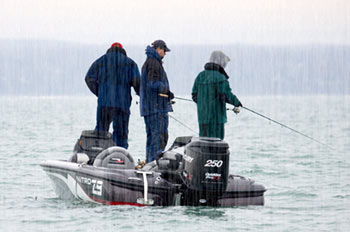 Saturday Brainerd/Alexandria Lakes Forecast
Saturday Brainerd/Alexandria Lakes Forecast:
7 am: 38-42 F. Light rain. Winds: N 10-20. Steady barometer.
Noon: 44-48 F. Light, showery rains. Winds:
N 15-20, gusts to 25. Steady to slowly rising barometer.
6 pm: 47-52 F. Showers linger, drying out north of Leech Lake where skies may brighten. Winds: N/NE 10-20. Slowly rising barometer.
.24" rain predicted for the Twin Cities Saturday (NAM model).
.06" rain predicted for Brainerd on Saturday.
.18" rain predicted for Alexandria.
 Sunday
Sunday:
Partly sunny skies, still
windy with a rising barometer. Winds: NE 15-25. Still choppy on area lakes. Sunrise temperatures:
38-43 F. Afternoon highs:
57-62 F.
 Gusty Sunday
Gusty Sunday. The good news: the sun returns tomorrow. The bad news: a strong pressure gradient will whip up northeast winds at 10-20, with a few gusts as high as 22-25 mph tomorrow. The strongest Sunday winds will blow across southern Minnesota, winds easing up the farther north you go tomorrow. Click
here to see the raw NWS data.
 Saturday Breakdown
Saturday Breakdown. The good news: the farther north you travel (or fish) today, the lighter and more sporadic the showers will be. The heaviest rains (over .50") are predicted to fall south of the Minnesota River.
 Tracking The Puddles
Tracking The Puddles. The models predict anywhere from .13" to .45" for the Twin Cities today (I suspect about a quarter inch or so will wind up being close to what really falls). A dry spell is likely from Sunday into Thursday morning, followed by scattered showers by late Thursday and Friday.
 A "Plan B" Saturday.
A "Plan B" Saturday. The latest NAM model suggests one surge of light rain during the morning hours, another, second wave of showery rains arriving this evening.
Flooding: costliest and deadliest weather-related natural disaster in the USA.
$2.7 billion: average annual damage toll from flooding since 2000 in the USA.
25% of Americans live in areas that are classified as "low or moderate flood risk"
4% of American homeowners have flood insurance (CNN).
U.S. On Record Pace For High-Cost Weather Disasters. No, you're not imagining it - this year's weather has been unusually severe, expensive, and deadly. USA Today has more
details: "
The USA has been hit with five weather disasters costing more than a billion dollars each in 2011, setting a modern record for the most high-cost weather events so early in a year, according to insurance estimates and government records. Tornadoes, floods and storms have inflicted unusually high costs because of their severity and their location, hitting populous areas such as Memphis, Raleigh, N.C., and Tuscaloosa, Ala. The severe damage could affect people nationwide, increasing insurance rates and draining taxpayer-supported disaster-relief funds. "This has been an incredibly active start to the year," said Steve Bowen, a meteorologist who tracks weather disasters at AON Corp., the world's largest global insurance broker. A new report by Bowen lists three billion-dollar disasters in April alone, which excludes the ongoing Mississippi River flooding and a blizzard that walloped the Midwest and Northeast from Jan. 31 to Feb. 2. Both are expected to cost more than $1 billion, the amount the federal government uses as the threshold to highlight the most severe weather disasters....
The 2011 costs follow three record-setting years in which thunderstorms and tornadoes alone caused an average of about $10 billion in annual damage, according to an institute study. "It looks like 2011 is perhaps going to set perhaps a new record," Hartwig said, adding that insurance costs have risen in areas that have been hit hard by weather disasters in recent years."
High Dew Point Records For May. Professor Mark Seeley has a recap of May 10, a day that brought large hail, funnel clouds, a confirmed tornado in St. Michael, and a sudden jump in dew points. Here's an excerpt from
WeatherTalk: "
Even more impressive than these high temperatures was the rise in dewpoints. Many observers reported record high dewpoints by late afternoon, including MSP International Airport which reached a July-like 70 degrees F. Windom, Fairmont, St James, and Faribault also reported dewpoints of 70 degrees F. Even higher dewpoints occurred at Hutchinson (73 F), Albert Lea (74 F) and Waseca (78 F). These numbers are incredible amounts of water vapor for the first half of May. In some cases they pushed the Heat Index Value (combination effect of temperature and dewpoint) to 100 degrees F or higher. It is believed that the Waseca dewpoint of 78 degrees F is the highest ever measured in the month of May. In the MSP historical records dewpoints of 70 degrees F or higher during the first half of May have only been reached in 1912, 1916, and 1962. The dramatic rise in temperature and dewpoint helped fuel severe weather across the state. There were over 40 reports of large hail during the evening of May 10th including 2.0 inch diameter hail stones at Chanhassen, Eden Prairie, Forest Lake, and Brainerd. Golden Valley, St Louis Park, and Fort Ripley reported 2.5 inch diameter hail, and Albertville reported 2.75 inch diameter hail. The season's first tornado was reported near St Michael (Wright County) at two minutes before 8:00 pm on the evening of May 10th, and there was a flash flood report near Milaca in central Minnesota. The Twins baseball game at Target Field against the Tigers was suspended for a time due to severe weather (lightning, hail). Hail had to be cleared from the filed using rakes and leaf blowers before the game could resume." (Twins photo above courtesy of wayzata.com).
* The local NWS has more on the record high May dew point readings
here.
Mississippi River Floods 2011: Hundreds Of Thousands Of Acres In Louisiana At Risk. An
update from the Huffington Post: "
BUTTE LAROSE, La. — In the latest agonizing decision along the swollen Mississippi River, federal engineers are close to opening a massive spillway that would protect Baton Rouge and New Orleans but flood hundreds of thousands of acres in Louisiana Cajun country. With that threat looming, some 25,000 people in an area known for small farms, fish camps, crawfish and a drawling French dialect are hurriedly packing their things and worrying that their homes and way of life might soon be drowned. People in this riverfront community gathered at their volunteer fire station to hear a man dressed in Army fatigues deliver an ominous flood forecast. Col. Ed Fleming leaned over a podium this week and warned that projections by the Army Corps of Engineers call for the station to be inundated by up to 15 feet of water. The crowd let out a collective gasp. "From the ground?" an incredulous resident shouted at the meeting. "From the ground," replied Fleming, head of the corps' New Orleans district. A few skeptics in the audience scoffed at the projection, but many others were shaken. "It's over with," muttered Pierre Watermeyer. "That's it. There's no sense in pretending." The corps could open the Morganza floodway north of Baton Rouge as early as this weekend, a move that would relieve pressure on the city's levee system. Opening the spillway gates for the first time in 38 years will unleash the Mississippi on a wild ride south to the Gulf of Mexico through the Atchafalaya River and divert floodwater from the river into the basin's swamplands, backwater lakes and bayous. Several thousand homes would be at risk of flooding."
 Satellite Images Display Extreme Mississippi River Flooding From Space
Satellite Images Display Extreme Mississippi River Flooding From Space. Landsat 5 shows a remarkable before and after series, details from NASA: "Recent Landsat satellite data captured by the USGS and NASA on May 10 shows the major flooding of the Mississippi River around Memphis, Tenn. and along the state borders of Tennessee, Kentucky, Missouri, and Arkansas as seen from 438 miles above the Earth. The flood crest of 47.87 feet on May 10, is the second highest rise in recent history; the highest being 48.7 feet in 1937. Five counties surrounding Memphis have been declared disaster areas, and the costs of the flooding are expected to approach $1 billion. The Mississippi River crest continues to move south and is expected to occur in the Greenville, Miss. Area around May 16 to finally crest in New Orleans around May 23.
Photo Credit: (Left) Landsat 5 image of the Mississippi River in the Memphis, Tenn. Area on May 12, 2006. (Right) Landsat 5 image of the Mississippi River in the Memphis, Tenn. Area on May 10, 2011. Credit: USGS/NASA
 America's Achilles Heel: The Mississippi River's Old River Control Structure
America's Achilles Heel: The Mississippi River's Old River Control Structure. Jeff Master's Wunderblog is must-reading for true weather enthusiasts. His
latest post has a fascinating explation of flood control systems in place across Louisiana, and how these levies, spillways and flood plains will be tested as never before in the coming weeks: "
America has an Achilles' heel. It lies on a quiet, unpopulated stretch of the Mississippi River in Louisiana, a few miles east of the tiny town of Simmesport. Rising up from the flat, wooded west flood plain of the Mississippi River tower four massive concrete and steel structures that would make a Pharaoh envious--the Army Corps' of Engineers greatest work, the billion-dollar Old River Control Structure. This marvel of modern civil engineering has, for fifty years, done what many thought impossible--impose man's will on the Mississippi River. Mark Twain, who captained a Mississippi river boat for many years, wrote in his book Life on the Mississippi, "ten thousand river commissions, with the mines of the world at their back, cannot tame that lawless stream, cannot curb it or define it, cannot say to it "Go here," or Go there, and make it obey; cannot save a shore which it has sentenced; cannot bar its path with an obstruction which it will not tear down, dance over, and laugh at." The great river wants to carve a new path to the Gulf of Mexico; only the Old River Control Structure it at bay. Failure of the Old River Control Structure would be a severe blow to America's economy, interrupting a huge portion of our imports and exports that ship along the Mississippi River. Closure of the Mississippi to shipping would cost $295 million per day, said Gary LaGrange, executive director of the Port of New Orleans, during a news conference Thursday. The structure will receive its most severe test in its history in the coming two weeks, as the Mississippi River's greatest flood on record crests at a level never before seen."
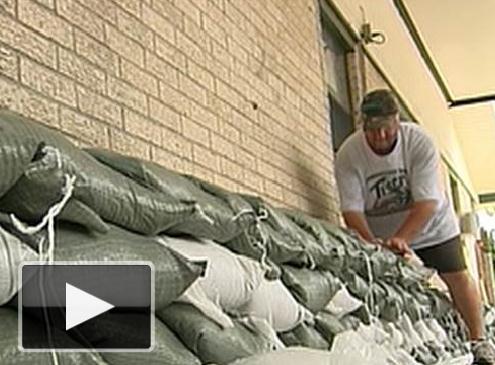 Cajun Country Prepares For 15 Feet Of Water
Cajun Country Prepares For 15 Feet Of Water. MSNBC.com has more
details: "
BUTTE LAROSE, La. — Cajun country residents threatened by Mississippi River flooding were packing their things Friday as they anxiously awaited word on when federal engineers could open a massive spillway that would inundate hundreds of thousands of rural acres and swamp thousands of homes. The Army Corps of Engineers is close to opening the key Morganza floodway to relieve pressure on the levees downstream that protect the more densely populated Baton Rouge and New Orleans areas. The corps could make the move as early as this weekend, though officials stress that no final decision has been made. Still, the governor has warned residents in the spillway's path to assume they'll have to leave their homes. With that threat looming, some 25,000 people in an area known for small farms, fish camps, crawfish and a drawling French dialect are hurriedly packing and worrying that their homes and way of life might soon be drowned. At a meeting earlier, Army Corps of Engineers Col. Ed Fleming warned a crowd at a volunteer fire station in rural Butte LaRose that where they were standing was projected to be swamped by up to 15 feet of water from Mississippi River flooding. The crowd let out a collective gasp."
Despite Warning, St. Louis Tornado Caught Airport, Passengers Off-Guard. The Capital Weather Gang (Washington Post) has a
very interesting story about the chrononology of the EF-4 tornado that ripped across the suburbs of St. Louis on April 22. A "one minute warning" for STL's Lambert Airport? Not good: "
The experience of Hall and Losciale raises the important question of where the breakdown in communicating the tornado warning occurred. For passengers within the terminal areas, such as Losciale and Hall, the bottleneck was somewhere between the National Weather Service, which is the sole issuer of official severe weather warnings in the U.S.; a Shawnee, Kansas-based company called Weather or Not, which is a private weather company the airport contracts with to receive specially-tailored weather information; and the airport authority itself. Jeff Lea, a spokesman for Lambert-St. Louis International Airport, says the private forecasting firm only gave the airport “a minute or so” of warning that a tornado was approaching, even though the Weather Service had issued the tornado warning 34 minutes before the airport was hit. “The airport relies on our weather service to give us information that a tornado may be tracking towards the airport and that information didn’t get to us until about a minute or so beforehand... when the weather was [already] getting particularly bad,” Lea said."
Cell Phones Could Be Killing Bees: Study. Mashable.com has the slightly terrifying
details: "
Colony collapse disorder — the phenomenon of disappearing bees, observed all around the world — could be partially attributed to cellphone use. The disappearance of bees is a serious issue, since they pollinate many of world’s agricultural crops. So far, scientists haven’t been able to pinpoint the exact causes of the syndrome, leading to the theory that several issues are reducing the bee population. A recent study, conducted by Daniel Favre at the Swiss Federal Institute of Technology, sheds more light on the issue by showing that cellphone signals are seriously affecting — or even killing — bees. To conduct the study, Favre tested honeybees’ reactions to nearby cellphones in different modes: off, standby and making a call. “The results of the present pilot study clearly show that the presence of actively communicating mobile phone handsets in the close vicinity of honeybees had a dramatic effect,” Favre says in his report. “Honeybees are sensitive to pulsed electromagnetic fields generated by the mobile telephones.” In other words, the cellphone signals confuse bees to the point where they leave the hive and don’t return. Of course, once could argue that the cellphones are — generally speaking — far away from bee populations, which makes the devices an unlikely cause for their deaths."
America The Beautiful. Check out this
YouTube clip, a stunning visual reminder of just how spectacularly beautiful our country is (when the weather cooperates): "
A few panoramic images from the Kolor Panobook 2011. The book includes 156 beautiful panoramas shot by 116 different photographers all over the globe. Most of the panoramas were created using Kolor Autopano software. Discove the book and find out more about Kolor at http://www.kolor.com."
 Online Media Is Replacing Newspapers And TV. Is That A Bad Thing?
Online Media Is Replacing Newspapers And TV. Is That A Bad Thing? There's little doubt that people are consuming information much differently than they did even a decade ago. We spend much of the day grazing our laptops, phones (and now tablets) for relevant nuggets of news and information. Now we can filter than information for our tastes and specific needs. Some worry about the future of democracy in this new, information-fragmented world. Democracy is predicated on an "informed electorate", yet it sometimes seems like a significant percentage of Americans don't have a basic grasp of some of the most important issues, ranging from health care to education to the growing deficit challenge. The Christian Science Monitor has a long (and excellent)
story about the state of the news business. People have been predicting the imminent demise of newspapers and TV news for a long time. Are they right? How will we be getting our the information we need 10 years from now? The need for perspective, analysis and deep background is greater than ever. Are we going to get that from the content aggregators of the world? Personally, I hope newspapers can adapt from dead-tree editions to bibrant, dynamic, personalized, 24/7 information centers for the 21st century, providing enough value and utility to command a subscription in the mobile and online worlds. The jury is still out - it's coming down to a race against the clock: "
There were 80 million more people in the United States in 2010 than in 1980. And though evening news viewership certainly isn't limited to the nation's senior centers, Katie, Brian, Diane, and Jim are well-known visitors in them. The median age of the nightly TV news viewer stands at over 62. So, in response to declining ratings at CBS, here we go again: another anchor shift aimed at bringing in younger viewers and bringing up ratings.There were 80 million more people in the United States in 2010 than in 1980. And though evening news viewership certainly isn't limited to the nation's senior centers, Katie, Brian, Diane, and Jim are well-known visitors in them. The median age of the nightly TV news viewer stands at over 62. So, in response to declining ratings at CBS, here we go again: another anchor shift aimed at bringing in younger viewers and bringing up ratings. But regardless of who is in the anchor chair for any of the networks, they are bound to seem smaller in 21st-century America than they once did. The changes cascading through the news media have made the old models of news delivery – like, say, an anchor reading the news at an appointed time – seem archaic. And it is about more than just TV – newspapers, magazines, radio, all the "legacy" media are feeling the earth move beneath them. Journalists look out and see thousands of empty campus TV lounges and newsprint-less recycling bins and millions of iPads and smart phones and they wonder what's coming next. For the public, the questions are deeper. What is the changing media landscape doing to the way the public gets news? What is it doing to the news itself? And what is it doing to the public as people?"
"Jet Man" Flies Across Grand Canyon. Man, I need one of these.
Gizmag.com has the details: "
Yves Rossy, the former Swiss jet fighter pilot better known as Jetman, flew over the Grand Canyon last Saturday (May 7th) using his wearable jet-propelled wing. It was the first time he has flown with the device in North America, having previously used it to cross the English Channel, perform an aerial loop, fly in formation with stunt planes, and to unsuccessfully attempt traversing a stretch of the Atlantic Ocean between Morocco and Spain. The Grand Canyon flight was originally supposed to take place on Friday, with many onlookers and journalists gathering for the event on that day. Rossy didn't feel adequately prepared, however, as he had only received permission from the Federal Aviation Administration (FAA) just moments before he was scheduled to fly. The FAA had only learned of his planned flight through media reports, as Rossy hadn't realized that he required their approval. On Saturday, however, Yves launched himself from a helicopter hovering at an altitude of 2,440 meters (8,005 feet). He then proceeded to fly at speeds of up to 300 kph (186 mph), 60 meters (197 feet) above the rim of the Grand Canyon West in the Guano Point region. The area is governed by the Hualapai Native Americans, from whom Rossy had previously received permission for his flight. After eight minutes in the air, he deployed his parachute and descended safely to the canyon floor."

 In Search Of Spring
In Search Of Spring. Nice Friday, huh? Good grief. With a May like this who needs March. Under a gray, drippy sky temperatures were 13 degrees below average in the Twin Cities (normal high is 69) - yet still 3 degrees warmer than May 13, 2010. Elsewhere, highs ranged from 45 at International Falls, Hibbing and Redwood Falls to 56 at St. Cloud.

 Dangerous Move
Dangerous Move. Hiding under a bridge overpass may protect your car from hail-dimples. It may also wind up in a fiery rear-end collision. Unless you can pull all the way over to the far shoulder, I'd resist the urge to park in the middle of a freeway, no matter what the weather is doing overhead. Photo courtesy of sky-chaser.com.
As Wet As The Fish?
Is anyone really shocked that it's raining on the Fishing Opener? After the tormented, on-again, off-again spring we've endured I'm just happy it's not snowing (or hailing). Pack a warm, waterproof jacket and plan on 3-6 hours of light rain today. The cold swirl aloft responsible for today's irritating showers pushes away from Minnesota tomorrow; the sun returns, highs flirting with 60 by late afternoon. Progress. A sunny first half of the week gives way to more showers and T-showers by next weekend as a powerful storm tracks just south of Minnesota. At least it should be milder one week out; highs closer to 70.
The lower Mississippi River (Louisiana and Mississippi) may remain above flood stage for another month. Flooding is America's most expensive weather hazard: an average of $2.7 billion in damage since 2000. Yet only 4% of American homeowners have flood insurance.
Finally, where does "Minnesota Nice" going during a major hailstorm? Last Tuesday, with 1-2" diamager, ping-pong size hail raining down in Edina and Eden Prairie, cars stopped under many of the overpasses, forming an impenetrable blockade of Highway 212. Everyone else was a sitting duck, sitting out in the open, at the mercy of monster hailstones. It was "every man for himself". Hail dings are preferable to fiery collisions. Be careful out there....
Report Stresses Urgency Of Action On Climate Change. Leslie Kaufman from the New York Times has the
story: "
The nation’s scientific establishment issued a stark warning to the American public on Thursday: Not only is global warming real, but the effects are already becoming serious and the need has become “pressing” for a strong national policy to limit emissions of heat-trapping gases. The report, by the National Research Council, an arm of the National Academy of Sciences, did not endorse any specific legislative approach, but it did say that attaching some kind of price to emissions of carbon dioxide, the main greenhouse gas, would ideally be an essential component of any plan. “The risks associated with doing business as usual are a much greater concern than the risks associated with engaging in ambitious but measured response efforts,” the report concludes. “This is because many aspects of an ‘overly ambitious’ policy response could be reversed or otherwise addressed, if needed, through subsequent policy change, whereas adverse changes in the climate system are much more difficult (indeed, on the time scale of our lifetimes, may be impossible) to ‘undo.’ ” The report, “America’s Climate Choices,” was ordered by Congress several years ago to offer “action-oriented advice” on how the nation should be reacting to the potential consequences of climate change. But the answer comes at a time when efforts to adopt a climate-change policy have stalled in Washington, with many of the Republicans who control the House expressing open skepticism about the science of climate change. Other legislators, including some Democrats, worry that any new law would translate into higher energy prices and hurt the economy."
 How Bill Gates Would Solve The Climate Crisis
How Bill Gates Would Solve The Climate Crisis. The older I get the more respect I have for Mr. Gates. Not only was he the driving force behind Microsoft, but he's focusing almost all of his time (and considerable wealth) on philanthropy, helping to erradicate many childhood diseases in third world countries. It's no secret that climate change is going to impact the poor disproportinately hard in the decades to come. Gates seems like a prescient thinker and a straight-shooter. Now, if he could only do something about Vista and my occasional blue-screen-of-death. Greenbiz.com has his
thoughts about the climate challenge: "
It takes a lot -- perhaps a minor miracle -- to put more than a thousand people in a celebratory mood at 7:30 a.m. And apparently, a public discussion with Bill Gates about climate change and its solutions is just such an occasion. This week, the former Microsoft chief and current philanthropist and head of the Bill & Melinda Gates Foundation served as the main attraction at a fundraiser in Seattle put on by Climate Solutions, a regional non-profit organization with operations in Washington, Oregon and Montana. During the breakfast event, Climate Solutions promoted its mission of clean energy solutions, in part through the premiere of its Solutions Stories video series, and in part through presentations from other regional environmental and political leaders, including Dean Allen, CEO of architecture and construction firm McKinstry; Climate Solutions' policy director, K.C. Golden; Washington state governor Christine Gregoire and Representative Jim McDermott were also in attendance. But the real reason the crowds had thronged, and Climate Solutions had gathered dozens of volunteers wearing bright green hard hats as greeters and coordinators to welcome attendees, was to hear Bill Gates speak on climate change challenges and solutions, and how to, as Golden put it, "pioneer a sustainable path to prosperity that works for us for the long run and for the billions of people around world" who are less privileged."
A Flood Of Reasons To Take Climate Change Seriously. The Charlotte Observer tackles the question head-on in this
story: is climate change a factor in the recent spike in flooding observed worldwide? "
We're just at the beginning of the beginning," Walsh said. Col. Vernie Reichling Jr. of the Memphis District of the corps said: "We'll have to fight this river all the way down to the Gulf of Mexico. I don't see it letting up." Of course, what the corps is really fighting is a river swelled not just by the power of nature but by the power of man. As climatologists have warned for years, warmer air holds more water vapor than cold. That means record snowfalls like the ones we saw this winter across the upper Midwest, and record rainfalls like the ones that have washed across much of the region this spring. It also means more evaporation - and record drought - in places like parched Texas. In Pakistan, Australia and now the center of the North American continent, we're getting a powerful taste of what global warming feels like in its early stages. And if for some reason you've decided not to believe scientists, then ask the people we pay to analyze risk in our society: In September, one of the largest reinsurance companies in the world, Munich Re, said that "the only plausible explanation for the rise in weather-related catastrophes is climate change."
 Climate Disasters: Unlikely To Be Agents Of Progressive Change
Climate Disasters: Unlikely To Be Agents Of Progressive Change. It's hardly scientific or statistically significant, but a lot of people have been coming up to me and saying "what the HECK is going on with the weather, between record tornado outbreaks, records floods, record snows, record drought in Texas - is this the new normal, Paul"? Wish I had a good answer for that - I'm just a bewildered spectator, but I strongly suspect that climate change is one of (several) factors contributing to a recent spike in extreme weather events, not just in the USA but worldwide. Grist magazine has an interesting
post: "
Americans won't wake up and get serious about climate change until there's a disaster." I've been hearing people say that for years, but more and more lately. There's always an uptick after a political defeat like the failure of the climate bill. It's delivered with "more in sadness than in anger" earnestness, and of course no one will ever say they want a disaster to happen, but it's hard not to detect, beneath the surface, some small bit of relish at the thought of saying "I told you so." In more heated circles, there's even a touch of Old Testament justice in the mix, as though Americans are getting what they deserve for their sinful ways and need to learn a lesson. I think that's a dangerous temptation that should be strenuously avoided. First and foremost, disasters suck: They impose a great deal of suffering on innocent people. It is never a good thing when that happens. But even if the moral reason is set aside, there are still two practical reasons to doubt that disasters will prompt the kind of change climate hawks would want. First, the U.S. has an almost $15 trillion economy. No sudden disaster this side of a massive nuclear attack could produce enough economic damage to substantially change the inertia of an economy that size."
Do Climate Skeptics Change Their Minds? Believe it or not, when confronted with "facts" and "science" some of them actually do, as reported by
Slate.com: "
Until a few months ago, you'd be hard-pressed to find a more classic climate skeptic than D.R. Tucker. A conservative author and radio talk show host, he didn't buy the notion that greenhouse-gas emissions were causing temperatures to rise. He was pretty sure global warming was a hoax perpetrated by Al Gore and a cadre of liberal, grant-hungry scientists. Then Tucker did what partisan pundits and climate skeptics rarely do: He changed his mind. "I was defeated by facts," Tucker announced on FrumForum, the popular conservative blog. In an April 18 post, "Confessions of a Climate Convert," Tucker told readers how he came to question the ideologies of the climate debate, examine the science, and conclude that global warming was, in fact, very real. Tucker's post sent a giddy ripple through green circles and stoked the ire of his libertarian colleagues. This sort of thing doesn't happen often. Or at least, it doesn't seem to. Only 48 percent of Americans believe that global warming is at least in part "a result of human activities," according to a 2010 Gallup poll, down from 60 percent in 2007 and 2008. Anthony Leiserowitz, director of the Yale Project on Climate Change Communication, attributes this decline to five factors: The economic collapse, a severe decrease in media coverage, weather events like "Snowmaggedon," the efforts of the "denial industry" (the network of industry-funded think tanks and political advocacy groups that push skeptic views), and the "ClimateGate" debacle. This shift toward climate-change skepticism makes Tucker's "conversion" all the more remarkable. So how did it happen?"
As Clinton Works Against Global Warming In Greenland, Some There Don't Mind It. Farming in Greenland? Retreating snow and ice is making Greenland green again, and many are enjoying the benefits of a warmer climate, as reported by the
Washington Post: "
NUUK, Greenland — Few places on Earth have seen starker changes in weather than this icebound island straddling the Arctic Circle. With that in mind, America’s top diplomat arrived here this week intent on calling attention to the perils of climate change. The problem was that Greenlanders aren’t exactly complaining. In fact, as Secretary of State of Hillary Rodham Clinton toured snow-covered fjords on Thursday, there were awkward reminders of Greenland’s embrace of the rise in temperatures that began two decades ago. Rather than questioning global warming, many of this island’s 60,000 inhabitants seem to be racing to cash in. The tiny capital of Nuuk is bracing for record numbers of visitors this year; the retreating sea ice means a longer tourist season and more cruise ships from the United States. Hunters are boasting of more and bigger caribou, and the annual cod migration is starting earlier and lasting longer. In the far south, farmers are trying their hand at an exotic form of agriculture: growing vegetables. “Before, the growing season was too short for vegetables,” said Noah Melgaard, a local journalist. “Now it is getting longer each year.”
Unzipping Climate Change. The Antarctic Sun (say what?) has the
story: "
Antarctica holds a lot of ice: About 70 percent of the world’s frozen water is locked up in the continent’s vast ice sheets. About 20,000 years ago, there was even more during what scientists call the Last Glacial Maximum (LGM). Then the planet began to enter one of the short, periodic interglacial blips between so-called ice ages when things heat up a bit. Ice sheets in the northern hemisphere began a relatively quick retreat, as the naturally warmer interglacial got under way. Antarctica didn’t really get going until about 10,000 years ago, at the beginning of the Holocene, the current epoch. But when the ice sheet finally began to pull back across the Ross Sea region, it did so with amazing rapidity. “The history of deglaciation [in the Ross Sea Embayment] is sort of an unzipping of each of the successive glacial valleys as you go along the Transantarctic Mountains,” explained John Stone , a geologist from the University of Washington. Stone led a small team of scientists — and one inquisitive high school teacher [See related article: Hope for education: PolarTREC teacher takes Antarctic experience to the classroom] — this past austral summer to the central Transantarctic Mountains, where a large field camp had been set up to support about 18 different research projects, ranging from paleontology to glaciology."
Implux: Omni-Directional Vertical Axis Wind Turbine For Urban Environments. There are some new, efficient (and visually more appealing) versions of wind turbines coming into the marketplace, as
reported by gizmag.com: "
When most people think of wind power they think of large-scale wind farms with fields of huge three-bladed horizontal axis turbines. With such farms requiring lots of room they are generally unsuitable for placement in or even near large cities. Smaller turbines tailored for urban environments such as AeroVironment's Architectural Wind System, the Honeywell Windgate and the Windspire represent a growing sector though, and the latest to catch our eye is the IMPLUX – a vertical axis turbine designed to harness the power of the wind blowing from all directions. The key to the IMPLUX, which was designed by inventor Varan Sureshan, is the omni-directional shroud that forms the outer covering of the turbine and directs the wind from all directions up through the unit to turn an aerofoil propeller rotor like that used on horizontal axis wind turbines. The shroud, which wouldn't look out of place in The Jetsons, consists of a series of fixed horizontal blades that are shaped to capture the wind and accelerate it up into the central chamber to turn the turbine rotor. To stop the wind simply blowing straight through the shroud, the horizontal blades are angled to direct the wind upwards. Sureshan says the wind entering the bottom-most opening, which has the highest focusing ability, forms a "fluid dynamic gate" – essentially an air curtain – that blocks the wind entering on one side from escaping out the other, instead forcing it up a past the rotor."
Rap Attack On Climate Skeptics Hits Home. Talk about creative ways to get the message out! The U.K. Guardian has a
story about a rap video (produced by a climate scientist) that has gone viral. Warning: the video has some strong language: "
Droppin facts all over this wax/ While bizness be crying about a carbon tax." In case you've missed it, take a look at this video (unless swearing offends you). It made me ask if comedy rap is an effective campaigning tool, and it certainly made me smile. Made by working Australian climate scientists for a television show, it lampoons the fact that virtually all climate sceptics are not scientists. It's a simple point worth making, but will the lyrical trickery mean it reaches people that po-faced preaching doesn't? I think it probably will - it's been watched almost 60,000 times already. The nearest recent equivalent I can think of is MC NxtGen's send up the UK health secretary Andrew Lansley for his proposed reforms to the health service. I think it's actually a better performed rap and it has been watched 375,000 times. It got a response from Lansley himself: "We will never privatise the NHS," he told the Guardian. "But I'm impressed that he's managed to get lyrics about GP commissioning into a rap." The climate rap predictably induced confected outrage in the sceptics over the bad language. None addressed the central point that most sceptics are not scientists."







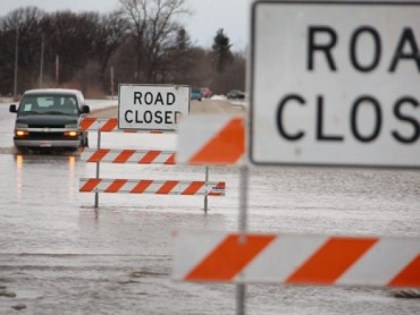


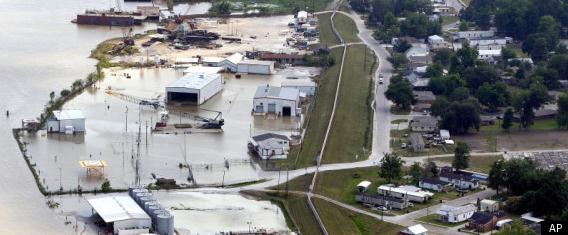
















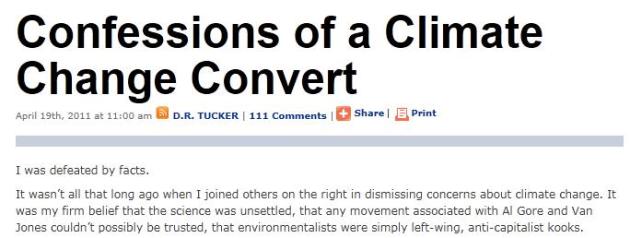
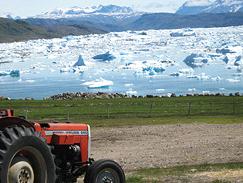



No comments:
Post a Comment